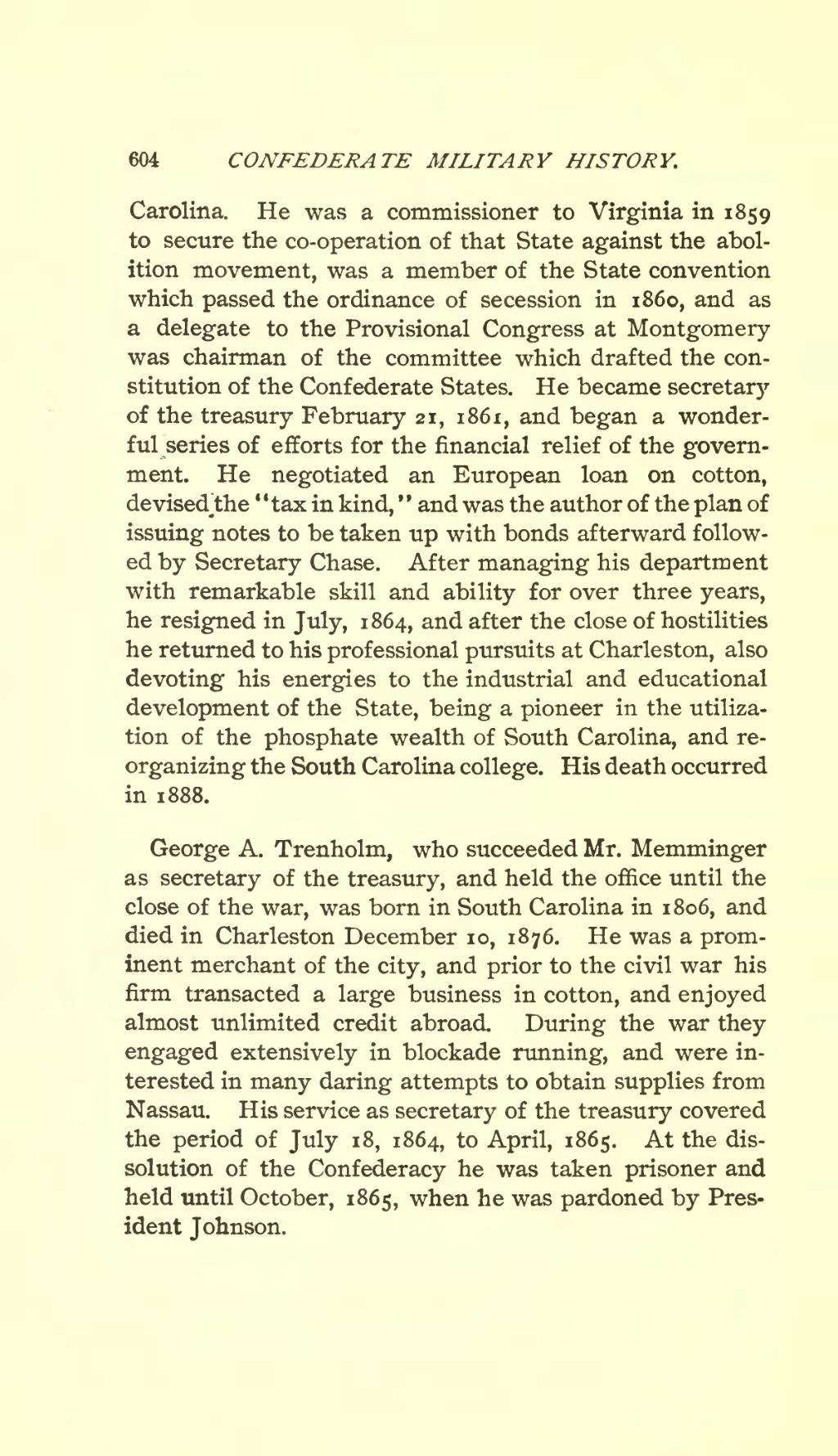to secure the co-operation of that State against the abolition movement, was a member of the State convention which passed the ordinance of secession in 1860, and as a delegate to the Provisional Congress at Montgomery was chairman of the committee which drafted the constitution of the Confederate States. He became secretary of the treasury February 21, 1861, and began a wonderful Aeries of efforts for the financial relief of the government. He negotiated an European loan on cotton, devised the "tax in kind," and was the author of the plan of issuing notes to be taken up with bonds afterward follow ed by Secretary Chase. After managing his department with remarkable skill and ability for over three years, he resigned in July, 1864, and after the close of hostilities he returned to his professional pursuits at Charleston, also devoting his energies to the industrial and educational development of the State, being a pioneer in the utilization of the phosphate wealth of South Carolina, and reorganizing the South Carolina college. His death occurred in 1888.
George A. Trenholm, who succeeded Mr. Memminger as secretary of the treasury, and held the office until the close of the war, was born in South Carolina in 1806, and died in Charleston December 10, 1876. He was a prominent merchant of the city, and prior to the civil war his firm transacted a large business in cotton, and enjoyed almost unlimited credit abroad. During the war they engaged extensively in blockade running, and were interested in many daring attempts to obtain supplies from Nassau. His service as secretary of the treasury covered the period of July 18, 1864, to April, 1865. At the dissolution of the Confederacy he was taken prisoner and held until October, 1865, when he was pardoned by President Johnson.
